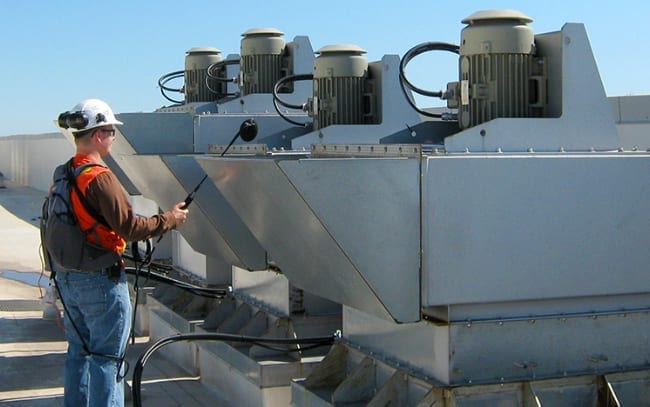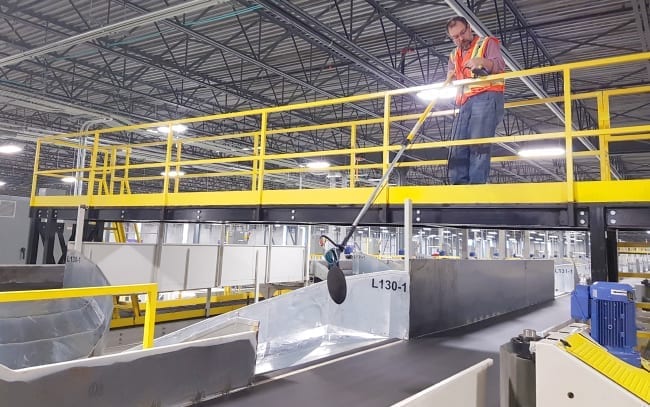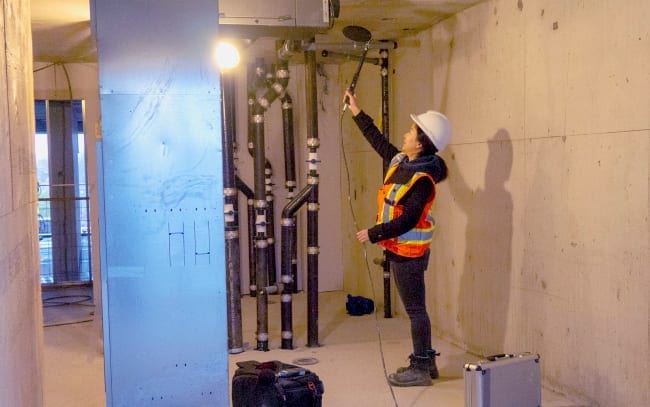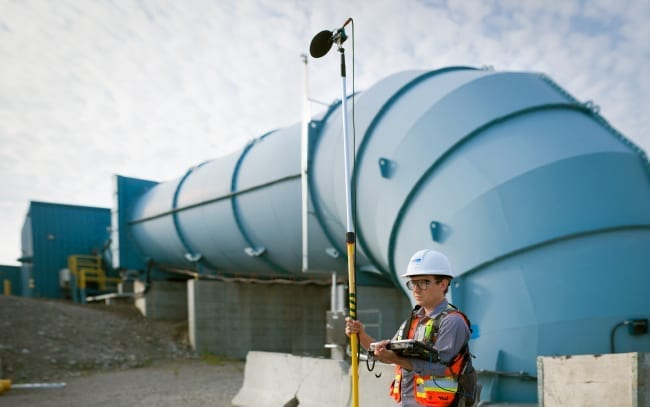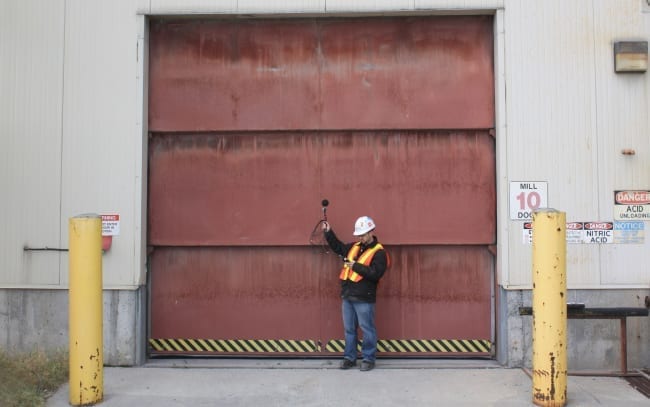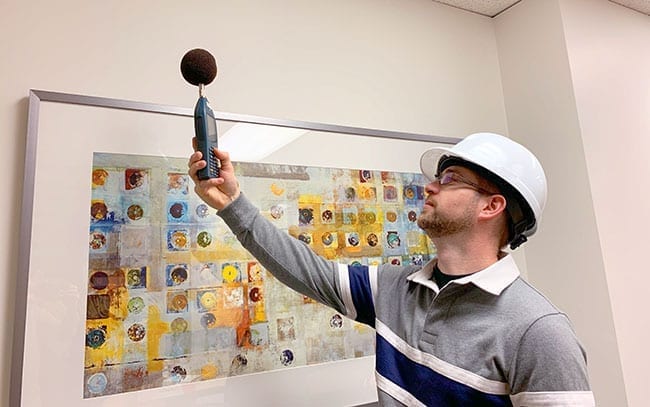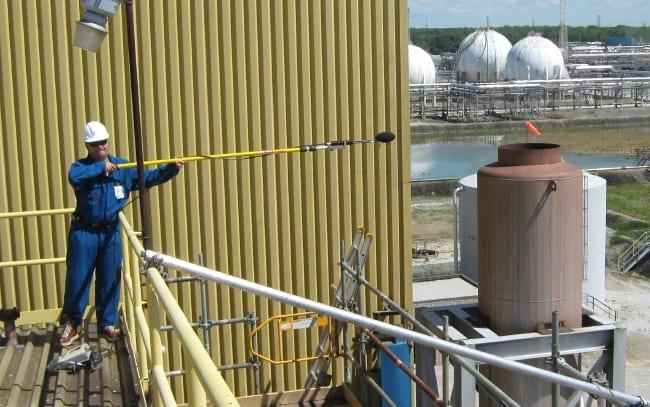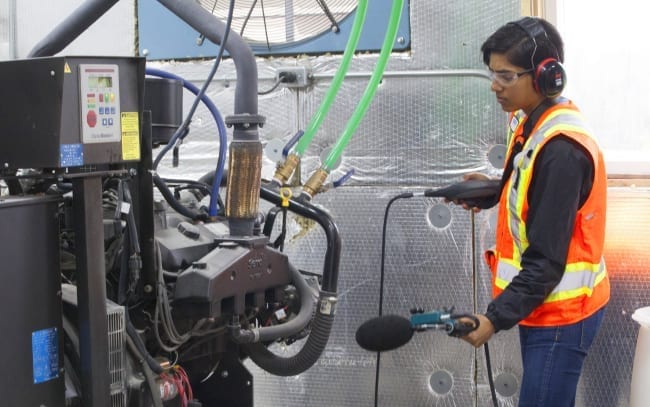From a rooftop patio bar impacting community neighbours, to condo owners annoyed by a “mystery” rattle. From a residential sud-division perturbed by an intermittent industrial “hum” to a manufacturer trying to identify the process equipment responsible for workplace noise levels being too high in an area of their facility. HGC has experience investigating and mitigating noise and vibration issues from a wide range of residential, commercial, institutional and industrial sources.
Noise is the number one complaint issue facing residential, commercial and institutional property managers, condo boards, and developers alike. Typically the problem is an air borne problem related to a noisy neighbour or next door office, but it is also not uncommon for the noise to emanate from a source of unknown origin from outside or somewhere deep in a building.
Potential sources of noise and vibration
These potential sources of noise and vibration include heating, ventilation and air conditioning (HVAC) systems; pumps and motors; generators; elevators, garbage chutes and compacters; garage doors and the like. These common building services systems can be found in all parts of a building: on rooftops, in basements and in the walls, ceiling and mechanical rooms of any floor. Sound and Vibration energy can travel long distances, in all directions from a source, through air, water or solid objects. When sound strikes a hard surface, it reflects back and will continue bouncing around until its energy is dissipated. A common way for airborne sound to come into living or work spaces is through hidden gaps and openings found around piping, duct and electrical systems. This noise may also radiate through rigid floor/ceiling assemblies and framing that extend between living/working/common and service areas.
Vibration-induced problems
Outdoor transportation corridors can also cause vibration, which is then transmitted via the ground and up into a building’s structure. Mechanical Equipment such as those found on rooftops can also create vibration which in that case would radiate down into a building’s structure. The results? The building’s structure and conduits, end up transmitting the vibrations to the air internally causing structure-borne noise. Building occupants could perceive this as a dull rumbling sound despite the fact that its originating source was vibration induced.
Our Investigative experience and resources
HGC has the investigative experience and resource toolkit to quickly identify the site of origin and cause of noise or vibration issues and then recommended control measures to mitigate the problems. We can measure the sound levels or the sound transmission properties between adjacent units and evaluate against typical standards or lease agreements(see page on STC and IIC Testing).
In investigating and solving noise and vibration issues:
- We help leading developers and condominium corporations achieve sign off on final technical audits of newly completed projects.
- We help leading Residential, Commercial and Institutional property managers maintain good working relationships with their tenants and property owners in both new and mature buildings.
Noise is typically a byproduct of industrial and manufacturing activity. For the most part, regulatory imposed set back distances and mitigation measures, such as enclosures and barriers, will limit the impact of sound levels extending into the environments beyond a facility. However, under certain conditions, excess noise can reach sensitive residential zones causing potential disturbance or annoyance. It can also impact on-site worker health and Safety. These are both unwelcome outcomes that are of concern to both community and industry, especially in circumstances where sound levels no longer fall within established regulatory guidelines.
Identifying the Source of a Noise Problem
To further complicate matters, the specific source of a noise problem may not be readily apparent to either the impacted residences or industries. There also may not be agreement on whether the disturbance does, in fact, exceed mandated criteria.
Our Investigative Experience and Resources
This is where calling on the forensic expertise of an acoustical consultant with industrial and commercial noise and vibration investigation experience can be invaluable. HGC has worked with all concerned parties to investigate, monitor, analyze and propose remedies for a wide range of noise excess problems. We are also well versed on municipal, provincial and federal noise compliance guidelines. In determining noise levels it may be necessary to first identify and subtract out background noise from the sound measurements taken to accurately determine the degree and origin of a problem
Sound Intensity Measurement Methods
We may also be required to map the noise levels around and within a facility to identify the exact process, equipment or barrier “leak” likely responsible. To that end we are often called upon to use advanced sound intensity instrumentation and measurement techniques to identify, isolate and rank individual sources in a complicated sound field often produced by large industrial facilities with complex, “intertwined” processes and operations. Residential Monitoring In some cases a noise problem may only occur intermittently. In those instances, we offer manually operated digital monitoring devices to residential complainants that allow them to record both noise and vibration problems when and as they occur with the simple push of a button for later evaluation.
Wind Turbine Noise Investigations
We are internationally recognized experts in Wind Turbine noise measurements and investigations especially with regards to low frequency noise and infrasound.
Whatever your industry, we can assist you in protecting worker health and safety, safeguard sensitive equipment and protect your surrounding environment from excessive noise and vibration. HGC has designed specified, and supervised successful installations of effective industrial noise and vibration control measures for Canadian, American and Global industrial market leaders around the world.
Acoustical Consulting Expertise with Industrial Application Challenges
Over the past two decades, HGC has conducted hundreds of workplace noise and vibration investigations – from 1000 MW power plants to oil refineries to large-scale food production plants – to determine accurately what specific source of sound and vibration being produced by process equipment, heating, ventilation & air conditioning (HVAC) systems, or even shipping and receiving activities is potentially in excess and is responsible for workplace health and safety concerns that must be addressed and mitigated
A Team Approach to Solving Noise & Vibration Control Problems
Where a sound or vibration levels exceed workplace health and safety targets, we use our analytical expertise to rank the sources, identify those requiring control measures, and develop a range of options to allow the company team to select the best solution. Our approach has always been to work closely with the manufacturers, suppliers and installers of noise and vibration control products, like silencers, mufflers, acoustical enclosures, spring isolators and elastomeric pads, to stay on the leading edge of the control technologies that are available and the physics that make them work. In fact, many manufacturers of noise and vibration control products hire us to help them develop newer, more effective technologies, and prototype test their performance.
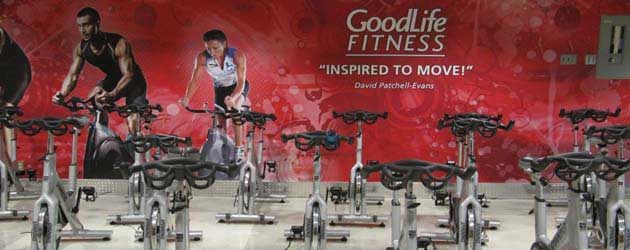

Dupont Experimental Station, Wilmington, Delaware

Georgia-Pacific Facilities Across America

Maple Leaf Sports & Entertainment Broadcast Studio

KK Women’s and Children’s Hospital, Singapore

MLT Aikins Law Offices, Saskatoon
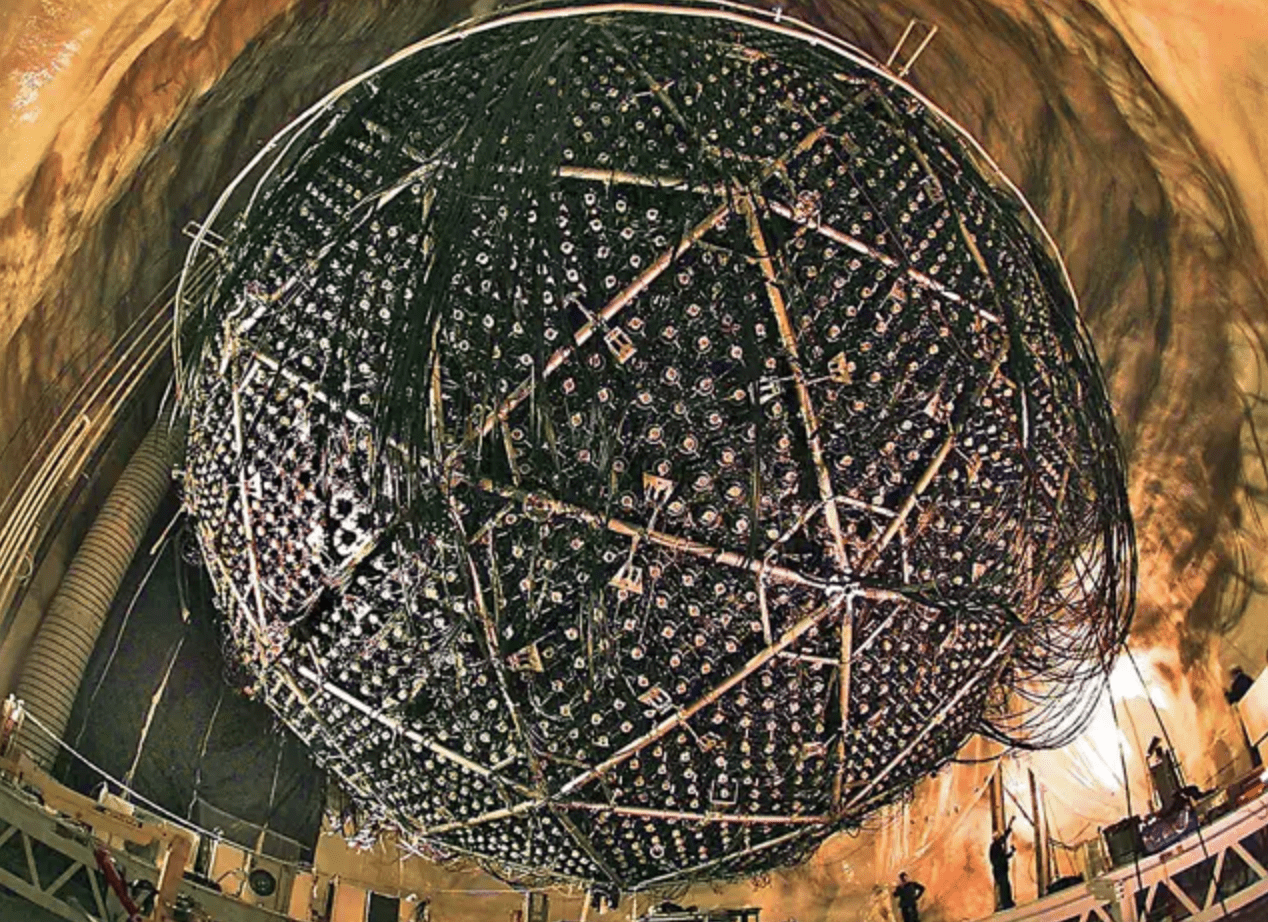
SNOLAB Underground Science Laboratory

Walker Athletic Complex, Mebane, North Carolina
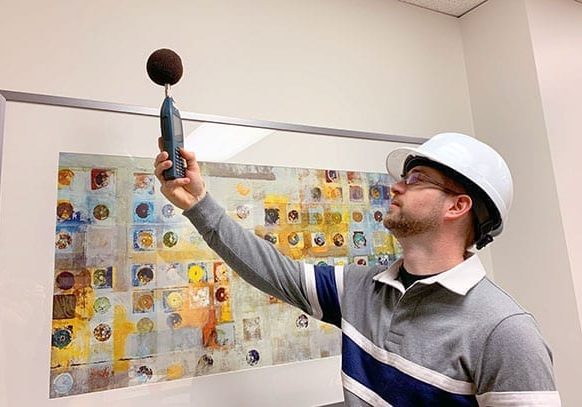
What to Know Before Calling an Acoustical Consultant to Deal with a Noise Problem

Interior Workplace Noise Control Methods Demystified

Noise complaints between suites? What property managers should consider first

A Breakthrough “Smarter” Method for Assessing Workplace Noise Exposure

Mitigating HVAC Related Noise and Vibration Problems in Building Design

The Noise & Vibration Challenges of Fitness Centers in High-Density Neighborhoods

What are Noise Barriers, and How Should They be Implemented?
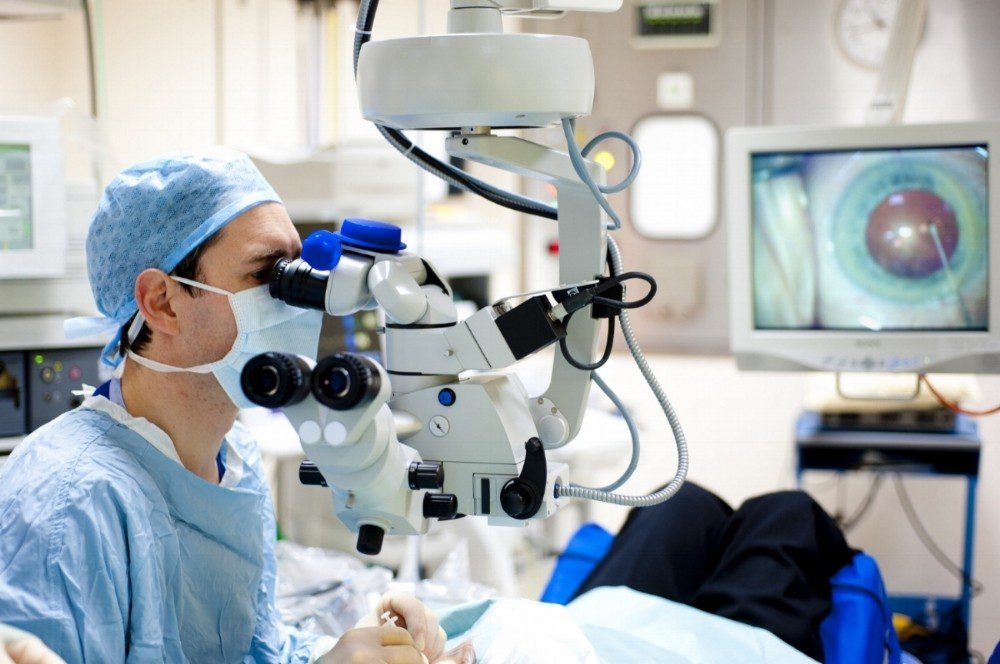
How Do You assess and Control Vibration Impacting Sensitive Equipment?
Need Answers?
Reach out to our acoustical consultants now.
